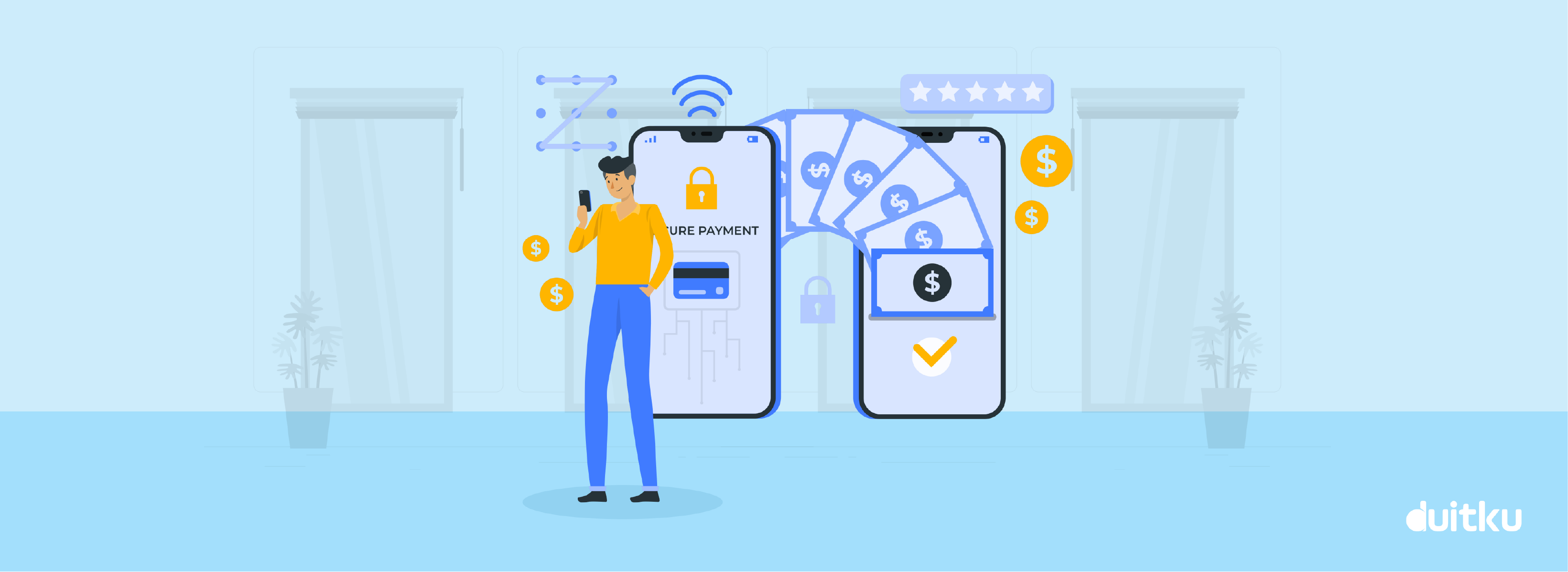n the past few years, technological developments have grown rapidly and have brought many influences in all aspects of life, one of them is the economy sector. In recent years a lot of business is done online, shopping & making payments online. All done easily, more effectively and quickly.
Likewise, many types of payments are developing with the advancement of existing website or application-based business. Buyers can make payment transactions or transfer between banks via the internet & mobile banking, to use e-wallet apps such as OVO, DANA, Go-pay & Virtual Accounts.
All of this simplifies and saves a lot of our time because we no longer need to queue at a bank or ATM to do transfers.
What is Virtual Account?

Virtual account (VA) is an automatic payment method on an account created specifically for each customer. When making a transaction, the company will provide a VA to the customer in the form of an ID number. This number will be used by the customer to complete the transaction. Each customer transaction will be given a unique and different virtual account.
In general, there are 2 types of virtual accounts:
Fixed Virtual Account
This type of account is usually associated with a single user. With this type, users can make repeated payments to make transactions without having to enter an ID number. In short, the Virtual Account number will not change.
This type of Virtual Account is suitable for use in a business that requires customers to pay for your products or services repeatedly. For example, to pay installments for goods or a subscription on a platform, or to top up on your online platform.
For fixed VA numbers, a merchant will provide a separate number associated with each member. Then the merchant can choose to use the Closed Amount or Open Amount nominal. The difference between Closed Amount and Open Amount is in the transaction nominal. The closed amount VA displays the transaction nominal and the open amount VA does not. For the open amount VA, the transaction amount must be entered independently by the customer. The example of this is e-wallet top up transactions.
Dynamic Virtual Account
If the Fixed Virtual Account type is associated with the user account, the Non-fixed Virtual Account is associated with each payment transaction. It is characterized by a unique and random virtual account number. Only used for one transaction.
For example, when a customer wants to make a payment for your product through a Virtual Account in e-commerce, the ID number obtained by that customer cannot be used anymore to make other transactions. If the customer decides to repurchase, the system will assign a new destination virtual account number.
What are the advantages of using a Virtual Account?

Bank transfers are made to certain individual/company destination accounts. The amount will be determined by the sender and usually the sender will confirm the transfer after completing the process.
Virtual accounts are usually created for payment confirmation automation. Where usually the company will create a special virtual account to make the payment transactions. This virtual account can also contain information on the nominal that must be paid, thereby reducing payment errors (human error) usually done by the customers. This special account allows the system to check automatically every time there is incoming funds, so that the transaction status can be updated in real time.
In contrast to interbank transfers where we can process money transfer transactions at any time, virtual accounts have an expiration date. The expiry date on the virtual account is the period of validity of the virtual account that has been created. Usually, each dynamic VA number will have a maximum validity period of 24 hours.
In other aspects, virtual account transfers work just like regular bank transfers. For example, in the case of a transfer to a virtual account from a different bank. The payment method will be the same as an interbank transfer, where the customer must enter the bank code and nominal payment independently. However, the transaction will automatically fail if there is an error in the nominal entry. In addition, virtual account bills can also be paid from different countries as long as the customer has access to the payment bank account.
What are the advantages of using Virtual Account Payment?

- Detect payments automatically.
- Transaction history along with clear details for company records with bank statements or so-called reconciliations.
- Can be done anywhere and anytime.
- Type of virtual account is as needed.
- Customer does not have to own an account of the same bank as the seller.
Then, how does it work?
Here’s how the Virtual Account works:
- The merchant or merchant tells their customer to pay to a specific invoice or VA for all their transactions.
- Each Virtual Account number is directly associated with a customer or invoice.
- Every payment received, transaction information that occurs will be sent to the system and it can immediately identify the buyer or where the invoice came from.
- The system notifies the Merchant every time an invoice has been paid.

Virtual Account is a payment method that is practical, fast and easy without having to confirm payments manually. Besides that, using a Virtual Account also makes transactions more secure. If you are interested in receiving payments using a virtual account, you can use a payment gateway service to facilitate your transactions.

One of the payment gateways that have been licensed by Bank Indonesia is Duitku. Duitku accepts payments via bank transfer to a virtual account directly on the website or online apps in collaboration with various major Indonesian banks, such as BCA, BNI, Mandiri, BRI, CIMB Niaga, Permata, and many others.

Merchants can also create their own virtual account numbers based on their customer IDs. In this case you will be created a fixed virtual account. To use this feature, merchants can directly contact the Duitku team or send an email to [email protected].
Register now and try our free demo. Make your business more and more efficient with DUITKU!






